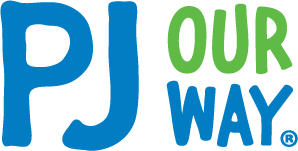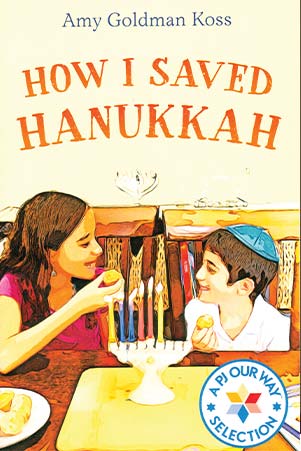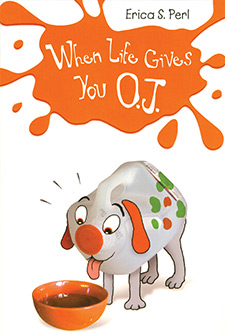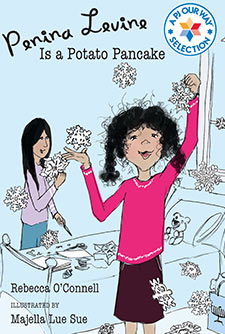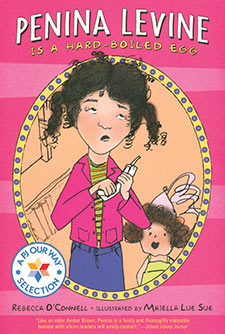How I Saved Hanukkah
Marla may be Jewish, but she wants to make Christmas decorations just like everyone else in her fourth grade class. Her family hardly even celebrates Hanukkah! What’s so great about being Jewish, anyway?
Average Rating
( hint: Login to leave a review! )
91 Reviews
Leave Review
What the Book is About
Jewish Content & Values
Positive Role Models
Content Advisory
Talk it Over!
More for You
What the Book is About
Marla hates being the only Jewish kid in her fourth grade class, and she hates having to make blue and white decorations when everyone else is making red and green ones. If only she could celebrate Christmas — her family hardly does anything for Hanukkah anyway! But when her best friend sleeps over during Hanukkah, Marla is determined to make it fun for Lucy, and in the process she makes her family realize just what they've been missing.
Jewish Content & Values
- The plot focuses on Hanukkah, the festival of lights. They play dreidel with chocolate gelt, light the menorah, tell the story, dance the hora, and fry latkes.
- Marla's family welcomes her friend Lucy into the family over Hanukkah, practicing the Jewish value of welcoming guests (hachnasat orchim).
- When Marla’s mother finally agrees to celebrate Hanukkah and explains her family’s traditions, she makes the connection to the next generation, demonstrating l'dor v'dor.
Positive Role Models
- Although Marla initially resents not celebrating Christmas, she takes the trouble to find out about Hanukkah and inspires her family to appreciate and enjoy being Jewish.
- Lucy is Marla’s non-Jewish best friend. She asks the teacher if she can have blue and white paper for her decorations too so that Marla doesn’t feel uncomfortable about being the only one who is different.
Content Advisory
None.
Talk it Over!
How would you feel if your whole class was involved in a project about everyone’s culture but yours? Would you participate, or would you feel upset and ignored? What would you do?
More for You
The Ashkenazi traditions of Hanukkah are fairly well known: latkes, doughnuts, dreidels, and lighting the hanukkiah (the special menorah for Hanukkah). But there are customs and foods from other Jewish traditions: Yemenite Jewish women play music with bells in the street and decorate their clothing with them, while Tunisian Jews display the Hanukkiah in the entrance to their home from Hanukkah until Purim. Traditional Sephardic Hanukkah foods include sweet cheese pancakes and stuffed vegetables such as eggplant and grape leaves.
What the Book is About
What the Book is About
Marla hates being the only Jewish kid in her fourth grade class, and she hates having to make blue and white decorations when everyone else is making red and green ones. If only she could celebrate Christmas — her family hardly does anything for Hanukkah anyway! But when her best friend sleeps over during Hanukkah, Marla is determined to make it fun for Lucy, and in the process she makes her family realize just what they've been missing.
Jewish Content & Values
Jewish Content & Values
- The plot focuses on Hanukkah, the festival of lights. They play dreidel with chocolate gelt, light the menorah, tell the story, dance the hora, and fry latkes.
- Marla's family welcomes her friend Lucy into the family over Hanukkah, practicing the Jewish value of welcoming guests (hachnasat orchim).
- When Marla’s mother finally agrees to celebrate Hanukkah and explains her family’s traditions, she makes the connection to the next generation, demonstrating l'dor v'dor.
Positive Role Models
Positive Role Models
- Although Marla initially resents not celebrating Christmas, she takes the trouble to find out about Hanukkah and inspires her family to appreciate and enjoy being Jewish.
- Lucy is Marla’s non-Jewish best friend. She asks the teacher if she can have blue and white paper for her decorations too so that Marla doesn’t feel uncomfortable about being the only one who is different.
Content Advisory
Content Advisory
None.
Talk it Over!
Talk it Over!
How would you feel if your whole class was involved in a project about everyone’s culture but yours? Would you participate, or would you feel upset and ignored? What would you do?
More for You
More for You
The Ashkenazi traditions of Hanukkah are fairly well known: latkes, doughnuts, dreidels, and lighting the hanukkiah (the special menorah for Hanukkah). But there are customs and foods from other Jewish traditions: Yemenite Jewish women play music with bells in the street and decorate their clothing with them, while Tunisian Jews display the Hanukkiah in the entrance to their home from Hanukkah until Purim. Traditional Sephardic Hanukkah foods include sweet cheese pancakes and stuffed vegetables such as eggplant and grape leaves.
